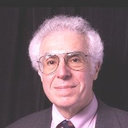Pseudo-asthma: when cough, wheezing, and dyspnea are not asthma.
Ключові слова
Анотація
Although asthma is the most common cause of cough, wheeze, and dyspnea in children and adults, asthma is often attributed inappropriately to symptoms from other causes. Cough that is misdiagnosed as asthma can occur with pertussis, cystic fibrosis, primary ciliary dyskinesia, airway abnormalities such as tracheomalacia and bronchomalacia, chronic purulent or suppurative bronchitis in young children, and habit-cough syndrome. The respiratory sounds that occur with the upper airway obstruction caused by the various manifestations of the vocal cord dysfunction syndrome or the less common exercise-induced laryngomalacia are often mischaracterized as wheezing and attributed to asthma. The perception of dyspnea is a prominent symptom of hyperventilation attacks. This can occur in those with or without asthma, and patients with asthma may not readily distinguish the perceived dyspnea of a hyperventilation attack from the acute airway obstruction of asthma. Dyspnea on exertion, in the absence of other symptoms of asthma or an unequivocal response to albuterol, is most likely a result of other causes. Most common is the dyspnea associated with normal exercise limitation, but causes of dyspnea on exertion can include other physiologic abnormalities including exercise-induced vocal cord dysfunction, exercise-induced laryngomalacia, exercise-induced hyperventilation, and exercise-induced supraventricular tachycardia. A careful history, attention to the nature of the respiratory sounds that are present, spirometry, exercise testing, and blood-gas measurement provide useful data to sort out the various causes and avoid inappropriate treatment of these pseudo-asthma clinical manifestations.


